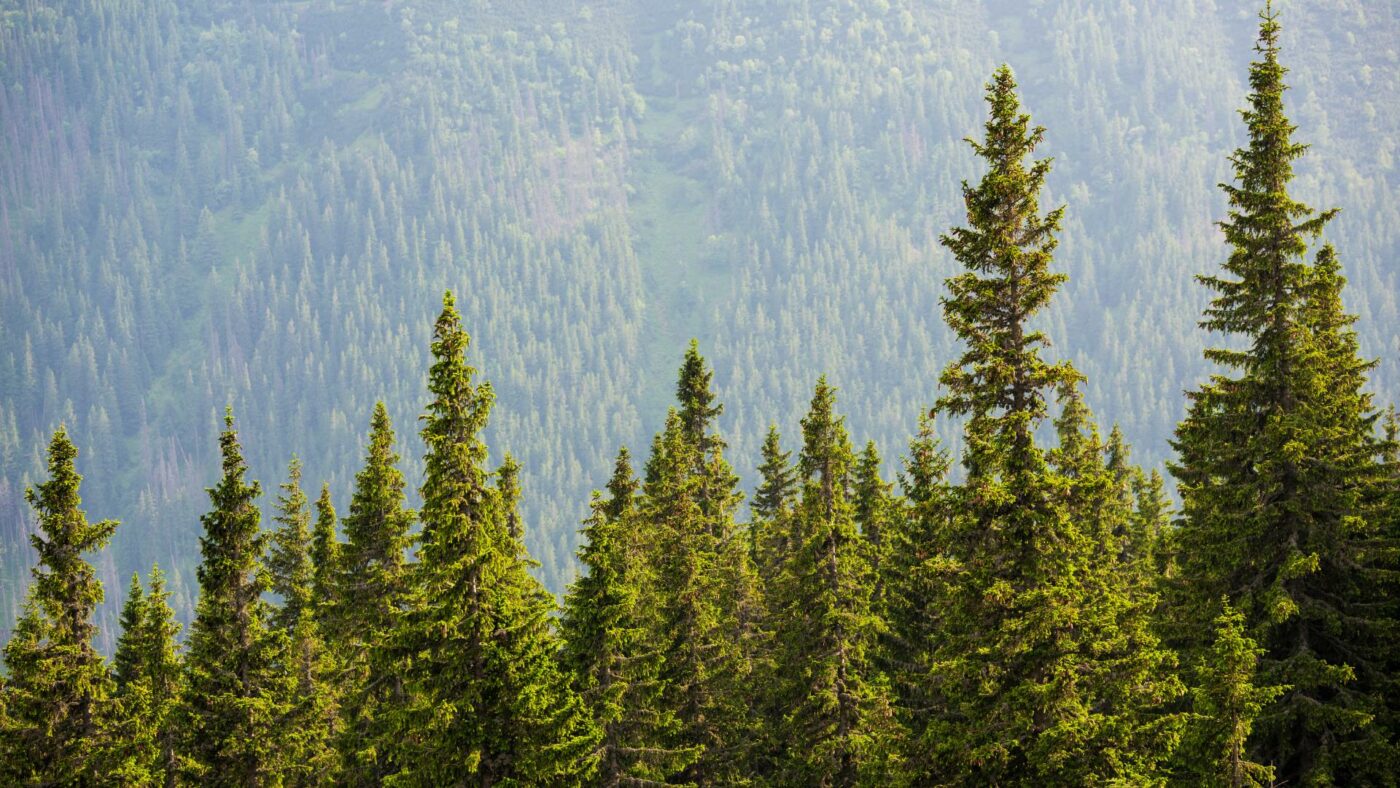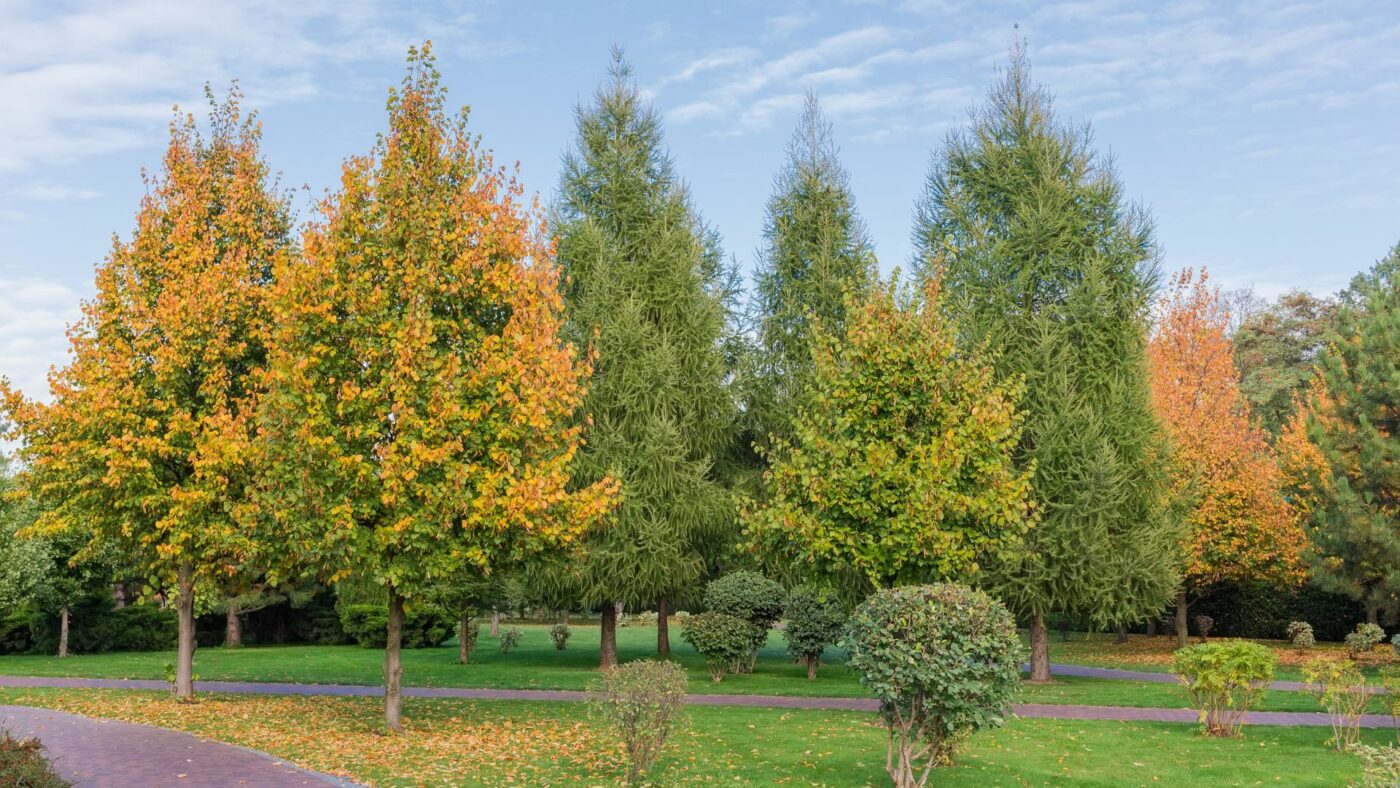In a world where climate change is becoming an ever-growing concern, we constantly seek natural solutions to protect and restore the earth. While trees are often praised for their ability to absorb carbon dioxide, there’s one specific group that stands out: conifers. These green giants, often associated with cold climates and festive winter traditions, are silent heroes in the battle against climate change. In this blog post, we delve into the impressive power of conifers for the climate.
The Evergreens
Conifers, recognizable by their conical structure and evergreen needles (hence the nickname “Evergreens“), exist in various parts of the world, from cooler northern regions to temperate zones. They are commonly found in forests, around lakes, and in hilly areas or mountainous landscapes. While conifers are a familiar sight in many landscapes, it’s their consistent contribution to the climate, even during winter, that truly sets them apart. We have listed the main climatic benefits of conifers:

1. Conifers: Year-round Green CO2 Filters
One notable characteristic of conifers is their ability to retain their needles throughout the year. This contrasts with many deciduous trees, which shed their leaves in autumn and winter. The continuous foliage of conifers gives them a unique advantage in the fight against climate change. During the cold months, when many other trees are bare, conifers actively absorb carbon dioxide from the atmosphere. While deciduous trees take a winter break, conifers tirelessly continue to purify our air. Their ability to function as natural CO2 filters all year round highlights the importance of conifers in our ecosystems.
2. Conifers are Climate-Adaptive
Over the course of evolution, conifers have developed the ability to thrive in cold and dry climates. Generally, conifers are more adaptive than other trees. Their needles and deep root system enable them to efficiently retain and utilize water, making them resistant to drought periods. Moreover, their thick bark and resin-rich trunk offer additional protection against cold and harsh weather conditions. While deciduous trees often shed their leaves to protect themselves against adverse external influences, conifers face the elements and continue to grow. This demonstrates their impressive resilience and adaptability.

3. Conifers Produce Resin
Resin production is a fascinating feature of many conifer species. This sticky substance, dripping from the tree’s bark, plays a pivotal role in the conifer’s survival strategies. First, resin aids in retaining water, especially in drier climates or during drought periods. It acts as a barrier, minimizing the tree’s loss of precious moisture.
Secondly, resin serves as a natural deterrent against pests and insects. The sticky nature of the resin can trap insects trying to penetrate the tree, while the chemical composition of some resins can repel or even kill insects. With this dual defensive role, resin becomes an indispensable tool for conifers to remain healthy and robust in a challenging climate.

Conifers vs. Deciduous Trees
Conifers offer many climatic advantages over deciduous trees, but this doesn’t imply that deciduous trees are less important for the climate. On the contrary, deciduous trees provide a wealth of climatic benefits in different areas:
1. Deciduous Trees Enhance Soil Fertility
Most deciduous trees shed their leaves in the fall or winter. Although this means they absorb less CO2 during these months, the fallen leaves provide organic material on the forest floor. This improves soil fertility.
2. Deciduous Trees Grow Faster
Typically, deciduous trees grow faster than conifers and reach ecological maturity sooner. This means they absorb large amounts of carbon dioxide and convert it into biomass in a shorter timeframe. Moreover, mature trees offer considerably more climatic benefits than young ones. However, the growth rate greatly depends on the tree species. For instance, certain deciduous tree species, like oaks, beeches, and maples, require 40 to 80 years to mature, while poplars might be considered mature in just 10 to 20 years. Conifers, depending on the species and growing conditions, need 40 to 150 years to mature. Some species, like the Scots pine, can achieve maturity in 40 to 60 years, while a European larch might need 100 years or more.

3. Deciduous Trees Boost Biodiversity
Deciduous forests often have a denser and more varied canopy than coniferous forests, providing shelter and nesting sites for various plant and animal species. The leaves of deciduous trees fall and decompose, leading to a fertile soil that supports a diverse range of plants and insects. Deciduous trees bloom and produce fruits, a food source for various animals. While coniferous forests often display uniformity, deciduous forests offer a layered mix of understory, shrubs, and tall trees, resulting in a wider variety of habitats. Finally, different species of deciduous trees attract different animal species, contributing to increased biodiversity.
Conifers Score Best in Tests
Scientists from the University of Gothenburg have researched which trees are most effective in improving air quality in urban areas, specifically looking at the difference between conifers and deciduous trees. The study revealed that conifers generally purify the air more effectively from pollutants than deciduous trees. However, deciduous trees may be better at capturing particulate pollution.

Image source: University of Gothenburg
Researchers collected leaves and needles from 11 different trees to analyze the substances they absorbed. They found that conifers generally absorbed more gaseous PAHs (polycyclic aromatic hydrocarbons) than deciduous trees. The larch, a conifer that sheds its needles every autumn, was the top performer. Larch trees absorbed the most particulate pollutants and were also proficient in capturing gaseous PAHs. However, it was emphasized that a mix of various tree species is essential to optimize air quality, taking into account other functions and benefits of trees.
Mix of Conifers and Deciduous Trees
Both conifers and deciduous trees are invaluable for the climate. Although they have different functions and benefits, they complement each other and work together to keep ecosystems healthy and resilient. While conifers act as constant CO2 absorbers throughout the year, deciduous forests offer ample opportunities for rich biodiversity. By selecting the right mix of coniferous and deciduous trees, placed in appropriate locations and conditions, they enhance and balance our ecosystem.
Seeking advice on positioning the right tree in the right growth conditions?
At GreenMax, we possess vast knowledge about trees in public spaces. We are eager to provide advice on selecting and positioning the right tree species in optimal growth conditions. Schedule a no-obligation consultation with us, and our experts will be happy to assist you.


